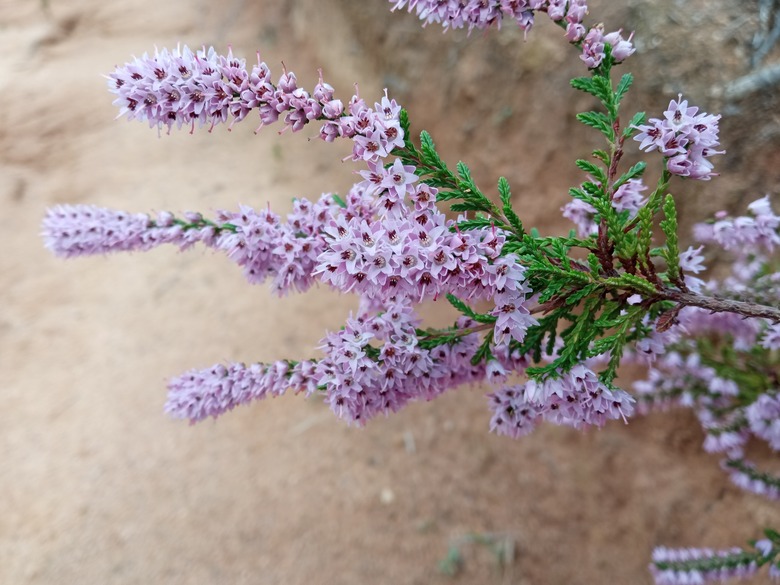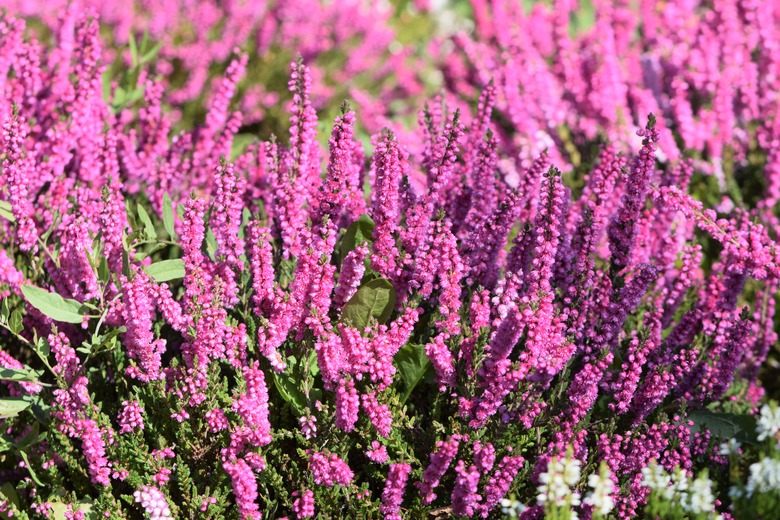What Is The Meaning Of The Heather Flower?
Heather (Calluna vulgaris), also called ling or Scottish heather, has small gray-green leaves that turn bronze to purple in winter as well as showy flowers that bloom in white or shades of red to lavender. Hardy in USDA plant hardiness zones 4 to 6, heather is often used as a groundcover and in rock gardens.
The meaning of heather, sometimes confused with heath (Erica spp.), depends on the color of the flower. Both heather and heath are members of the Ericaceae family.
Characteristics of Heather Flowers
Heather, once used to make brooms, is a sturdy plant that does well in poor soil. Growing up to 2 feet tall and 2 feet wide, the plants have leaves smaller than 1 inch by 1 inch, growing in groups of four.
The bell-shaped flowers are small, typically much less than 1 inch in width or length. Stems are evergreen and usually brown or gray. The fruit of heather is either a berry, drupe or capsule depending on the species.
Heather flowers grow in clusters, each bloom attached to a central stem like a lily of the valley or snapdragon in a configuration called a raceme. As the central stem, or spike, grows, new flowers bloom above the older ones. Heather flowers bloom from late summer to early autumn.
There are over 700 cultivars of the low-maintenance, woody perennial. Kinlochruel has white double flowers and green foliage that turns bronze in the winter. Mauve flowers and yellow foliage that turns brick red in the fall are the notable characteristics of the Firefly cultivar.
The Meaning of Heather
Communicating with others through flowers, known as floriography, dates back thousands of years and crosses many cultures. Its use is traced to the Ottoman Empire, where harem members used flowers to secretly communicate.
The Victorians elevated the art of using bouquets to express feelings as a way to get around what might be deemed improper behavior. Flower dictionaries with definitions culled from botany, religious sources and folklore were common. A suitor might send a woman a red rose to signify love only to receive a yellow carnation in return, signaling disdain.
While the meanings of flowers are not universal, some, like red roses to symbolize love, are commonly used. Both Collier's Cyclopedia of Commercial and Social Information, published in 1883, and Reiman Gardens at Iowa State University's The Language of Flowers, published in 2005, list solitude as the hidden meaning of purple heather flowers. The less common white heather symbolizes protection, luck or wishes coming true.
If you've been gifted heather flowers as a symbol of luck or solitude and want to preserve them, tie the stems together with string or a rubber band and hang the bundles upside down in a dry, dark, well-ventilated place. They should be fully dried in three to five weeks.
Tip
The hidden meaning of purple heather flowers is often thought of as "solitude." The less common white heather symbolizes protection, luck or wishes coming true.
Caring for Heather Plants
Heather thrives in acidic soil with a pH between 4.5 and 5.5. The simplest way to add acidity to your soil is to work in a commercial acidifier, available at a garden center. Too little acid causes iron deficiency (chlorosis), making plants turn yellow and become stunted.
Plant heather in well-draining soil in full sun or partial shade in areas where it's hot throughout the summer. Too little sun dulls the color of the foliage and causes plants to be weak and leggy. Keep the soil moist but not soggy with twice-weekly watering until the plant is established.
Mulch heather plants with pine straw or peat moss to maintain soil moisture and suppress weeds. Generally, heather plants don't need fertilizer other than an application of rhododendron fertilizer when they first go into the soil. Prune the plants each spring to promote flowering and prevent bare stems.
References
- University of Missouri Integrated Pest Management: Floriography: When Flowers Talk
- Smithsonian Gardens: The Language of Flowers
- NC State Extension: Calluna vulgaris
- Britannica: Heather
- Oregon State University College of Agricultural Sciences: Calluna vulgaris
- Singing Tree Gardens Nursery: Kinlochruel
- Heather World: F
- Nebraska Extension in Lancaster County: Drying Flowers Guide
- University of California IPM Program: Heather

